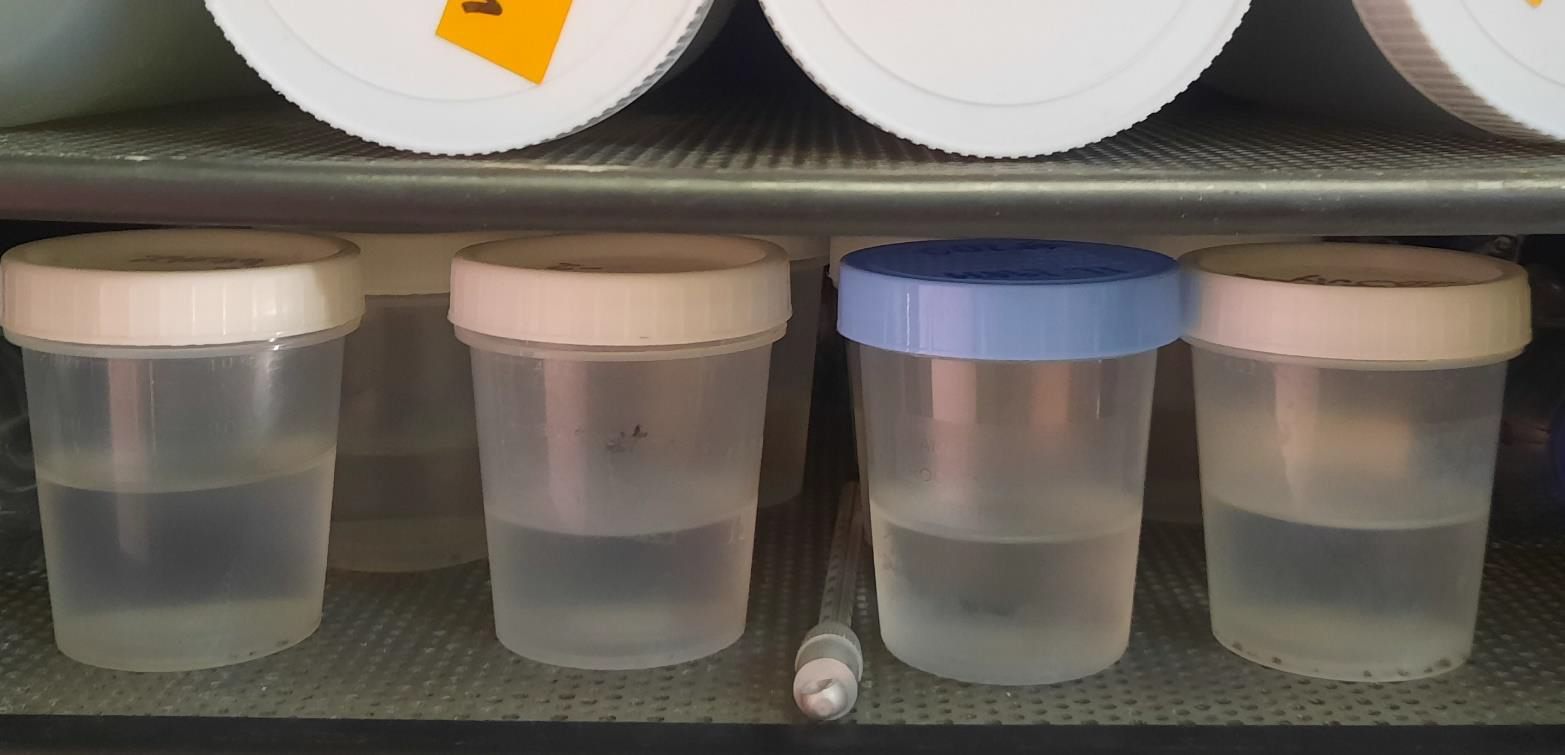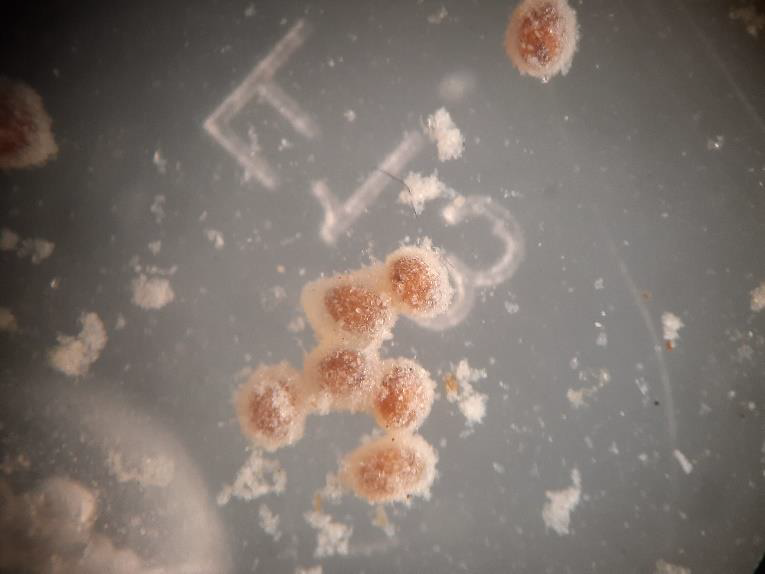At the end of last year’s growing season, juvenile Hine’s Emerald Dragonfly larvae that had been cultured at the Hatchery all season were packed up and transported to an overwintering facility at the University of South Dakota. At the same time, a new cohort of dragonflies -still in the egg stage- were delivered to the Hatchery from USD.

Hine’s Emerald Dragonfly eggs overwintering at stable temperatures in an environmental chamber. The temperature is tracked by a data logger kept in a similar cup as the eggs, and a twice-daily quick check is made with the thermometer visible in the photo. Photo: USFWS.
Eggs are collected by research partners (USD and others) in the mid to late summer, when females are carrying fertilized eggs and are ovipositing- laying their eggs- in the marshy areas of spring-fed wetlands, wet meadows and fen habitats that this species prefers. The eggs are kept in individual clutches, allowed to harden, counted, and as the fall progresses into winter, chilled from warm summer temperatures to cold winter holding temperatures, approx. 3-4 °C. Over the winter, the groups of eggs are divided, packaged for transport, and delivered to the partner agencies -including Genoa NFH- that continue to over winter the eggs and then culture new juveniles in the spring. The eggs are transported in coolers with cool/cold packs to keep them from warming up and are quickly transferred to a stable temperature environmental chamber at the Hatchery. They’ll be kept at a stable 3-4 °C through the winter, then slowly warmed a few degrees per week in late March and April.
Genoa NFH has been working with Hine’s Emeralds since 2013, and in 2016 eggs were housed and the resulting new larvae reared on station each year. These previous cohorts of eggs have all been collected from females in a (relatively) large breeding population in Northern Wisconsin, but this new cohort consists of eggs collected from females in a smaller and more critically endangered population in Illinois along the Des Plaines River. The population augmentation or reintroduction of individuals that (hopefully!) will result from these hatchery reared animals is a key part of the recovery of Hine’s Emeralds, especially in the critical Des Plaines River population.
By: Beth Glidewell

A close up view of dragonfly eggs overwintering. Photo: USFWS.
